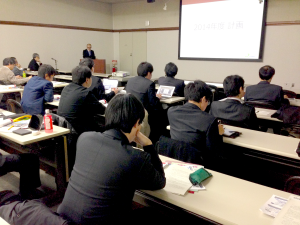For today’s post, I had a few things planned, but haven’t been able to work anything out yet. So I’ll talk a little about these bits and pieces: Upcoming conferences and meetings, some future instrumentation plans, and a little about the Fancy Background Subtraction
Today, I ended up in an obscure but interesting Japanese meeting about X-ray and neutron techniques for investigations of metals. This is one of the first conferences for me this year. The conference and travel plan is as follows:

- This Wednesday to Friday, I’ll be presenting a poster at this year’s MANA International Symposium, a small conference organized by my institute. Here, I hope to meet with Philip Moriarty (of anti-stripy-nanoparticles fame).
- I have been invited by Xenocs’ Peter Hoghoj to speak at the Denver X-ray Conference in Montana this year. It’s scheduled as a satellite conference to the enormous IUCr meeting, to which I also submitted a short abstract. At the moment, I am trying to decide between spending money on the IUCr meeting or using that budget for one more beamtime.
- There will be a beamtime at Diamond with Zoë and Martin, at a very interesting high-resolution diffractometer. Looking at the design for that beast, in particular at the arrays of silicon crystals, the price tag must have been enormous!
- Hopefully, there will be a chance to join Martin on one of his Neutron beamtimes as well (If we get beamtime).
So, a rather short schedule, but a prudent one given the uncertainties of my future this year: I’m waiting to hear from my application for a permanent position (with my current position running out at the end of October), as well as for information on whether or not I managed to get any of the three budgets I applied for. We’ll see!
As for future instrumentation plans: this is very much dependent on the budget that becomes available. At the moment, we are upgrading an “old” Bruker SAXS machine by changing the Cr (low-energy) source to a Molybdenum (high energy) source. While the source is going to be more useful, it remains to be seen just how efficient and useful the Cyberstar detector is at those energies. Having measured a few times on the Cr-version, my overall impression of the machine is that it is reasonably useful (the software appears more useful than the Rigaku stuff, but still does not appear to offer any sort of command-line operation to easily do custom measurements).
If we get one budget, I’ll be heavily upgrading the Bonse Hart instrument. If we get another budget, I’ll be building a new machine (with details to follow upon funding success). If I get the last budget, I’ll be traveling a lot, focusing on specific Bonse Hart and software developments. Exciting times!
Now for the last topic: Fancy background subtraction. This is mentioned in the Everything SAXS paper, but I didn’t work it out. The idea is to write a detailed correction for extracting the sample scattering if the sample is sandwiched between two sheets of sample holder material (such as a liquid sample in a sample cell, sandwiched between two glass or mica slides).
If the sample holder is reasonably absorbing, the primary beam intensity incident on the sample is reduced, and the beam incident on the downstream window is further reduced. Scattering from sample and container is further attenuated with a direction-dependent absorption depending on the material following the scattering event. You can see that this becomes a bit complicated.
Last week, during some other lectures, I wrote down the contributions to the scattering pattern in case of a sandwiched sample (assuming no multiple scattering). It turns out the correction is not so hard, and therefore, such a fancy background subtraction module can be made for the “imp2” data reduction methods.
As indicated in the review paper, such a derivation has already been done by others. However, it gives a special sort of satisfaction and insight if you are able to derive the corrections yourself. Such insight is quite useful when finally implementing the correction, and can prevent some variants of stupid mistakes. I hope I can show this derivation next week, because it is quite illustrative. As with the sample self-absorption derivation, this correction is manageable for flat sample holders, not capillaries!
Anyway, that’s it for today, back to the lectures!

Leave a Reply